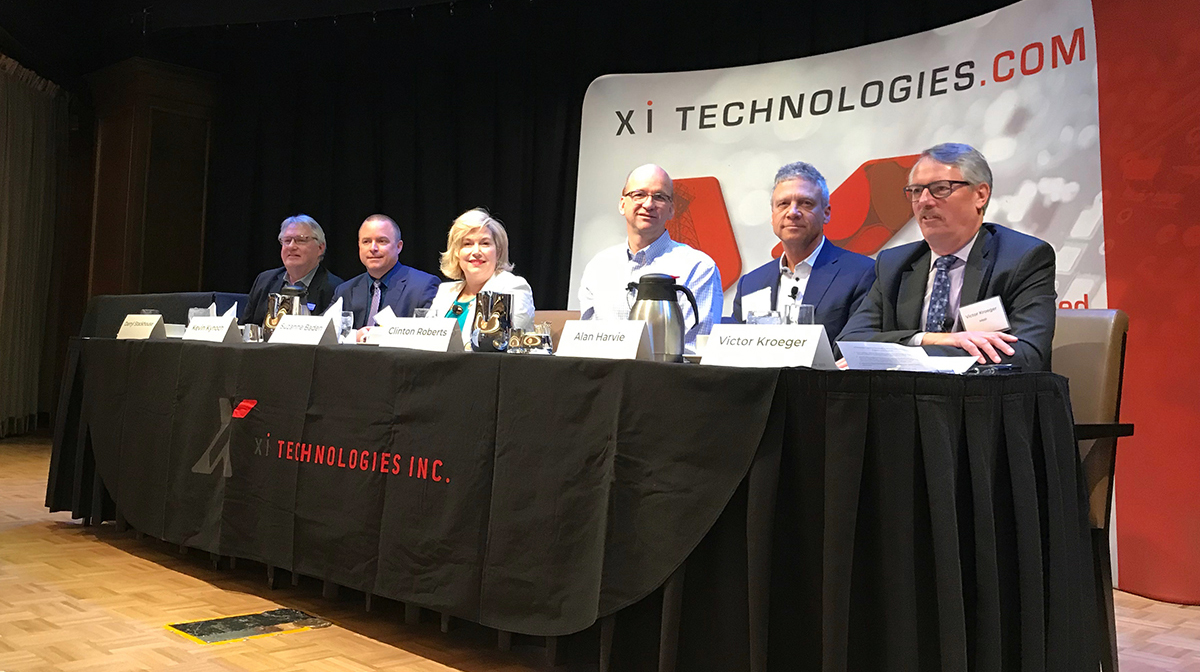Word to the Wise: Roundtable on ARO emphasizes need for standardized approach to liability valuation
April 23, 2019
Following is a summary of key points expressed during XI’s April 18 Roundtable on Asset Retirement Obligations.
Each week, XI Technologies scans its unique combination of enhanced industry data to provide trends and insights that have value for professionals doing business in the WCSB. If you’d like Wednesday Word to the Wise delivered directly to your inbox, subscribe here.
Last Thursday, April 18, XI Technologies had the honour to host more than 150 Canadian oil and gas senior leaders for a roundtable discussion on abandonment and reclamation liabilities. Panelists representing E&P operators, banks, legal, accounting, and receivership interests joined with audience participants to discuss the current realities and business implications in the wake of landmark liability management cases.

With Alberta’s inactive well inventory reportedly now sitting at approximately 90,000 wells, Saskatchewan’s at about 38,000, and BC’s around 10,000, all parties agreed: we all need to work cooperatively to find balanced solutions between environmental and industry needs that will first stop the growth of inactive well inventories. The next step will be to deal with reducing the inactive inventory through concentrated abandonment, reclamation, and remediation efforts before they hit the orphan well program.
“The key to solving the orphan well problem,” stated one panelist, “will be that we can continue to create funding. The solution to the inactive well inventory is having an industry that is healthy, dynamic, and well-capitalized so we can continue to fund cleanup into the future. If we don’t have cash flow in the industry, we can’t solve the long-term problem.”
A common thread during the roundtable discussion – both from the panelists and the audience – was the need for a standardized approach for valuating and applying Asset Retirement Obligation (ARO) costs. With the oil and gas industry currently carrying some $70 billion of net debt, banks are reluctant to loan funds on new acquisitions and/or capital projects due to the uncertainty or inaccuracy of company ARO. Some banks are changing lending covenants to require an LLR above 2.5, while other lenders are adding ARO to current liabilities if a company’s LLR goes below 2.5.
As XI has explored in a white paper entitled “ARO vs LLR: 5 Reasons NOT to use LLR to estimate ARO”, the LLR formula was never meant to be an ARO estimation tool. As such, it doesn’t account for five key components that could drastically alter the valuation of abandonment and reclamation costs. Therefore, any lending covenant based on LLR is likely to provide a skewed sense of loan security. The consensus during last week’s roundtable was that a standardized approach to estimating ARO is needed to provide a level playing field for all stakeholders. A standardized ARO process, coupled with a proactive and consistently applied annual closure program, is the most likely way for companies to improve banking relationships and stem the growth of the inactive well inventory in Western Canada.
XI Technologies Inc., working with industry and environmental liability experts, has attempted to bridge the gaps in current liability reporting practices by introducing the industry’s first ARO estimation, evaluation, tracking, and decision-making tool. Based on the premise that companies should be able to forecast, manage, and report their environmental liabilities similar to the way they forecast, manage, and report reserves, XI launched the AssetBook ARO Manager to help companies streamline and increase the accuracy of their corporate ARO process. ARO Manager includes standardized workflows for ARO estimation, forecasting, aging, and reporting, and contains a standardized cost model that companies can use to benchmark their own costs or perform scenario analysis. XI’s cost model is based on real-world abandonment, reclamation, and remediation costs for wells and facilities (excluding mined oilsands) across every WCSB region. It allows the flexibility for companies to create their own proprietary cost models by incorporating their own actuals from AFEs and area-specific pricing agreements.
